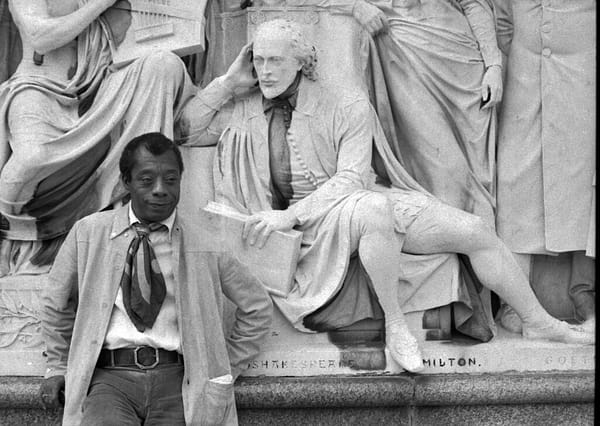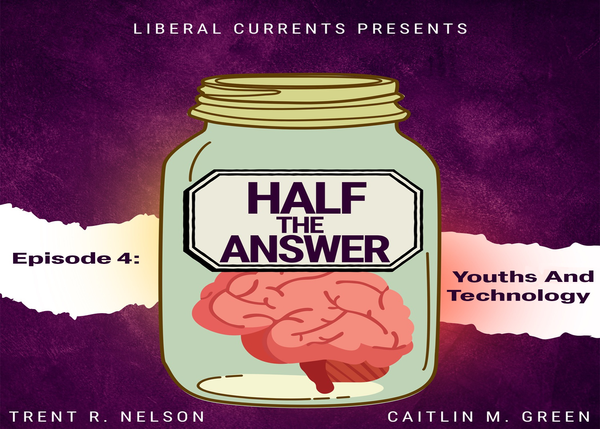In Their Own Words: Intimacy and Tragedy in Chris Arnade's Dignity

The title of Chris Arnade’s book seems at times paradoxical, as one is reading through the catalogue of indignities endured by the people he sat with, talked to, and photographed. But that, of course, is the point: even in the most rusted-through of the Rust Belt, even in the crackhouses and the sex worker’s motel room, the people are human beings, with dignity and community. In many cases, more of the latter, and more highly prized, than those of us in the “front row,” as Arnade terms it.
This message is so important and so adeptly communicated that I confess I hesitate to be too critical of other aspects of the book. Yet beyond the stories Arnade tells about the people he meets, there is a thesis which undergirds the book, a central argument about how the history of the late 20th century played out and who bears responsibility for the present state of the communities he visits. Further down, I will challenge this thesis. But before that, I think it is important to highlight why Arnade’s overall project is so important, and why those of us who do not live in the types of communities he documents ought to engage with it.
Conversation rather than documentation
There can be no denying that Arnade has given us an invaluable book. Arnade himself comes from a community that has gone into exactly the sort of decline he describes. I did not—I grew up in Fairfax County, Virginia, an affluent county with a high middle rather than a high top bracket. With close proximity to Washington, D.C., and part of the regional block that would turn blood-red Virginia into a swing state, I was surrounded by ethnic, national, political and religious diversity, but all of a middle or upper-middle class sort. My career eventually took me to New York City. In short, while Arnade’s insulation from what he documents in the book was something of a conscious choice, fleeing from his hometown, I have always lived a privileged, insulated life. People like me badly need books like Dignity; books that not only present the lives of people who do not share my advantages, but which do so without voyeurism and without condescension.
This aspiration, however, sits uncomfortably with the fairly bare-bones systemic analysis that Arnade inserts into the book throughout. He leans heavily on a distinction between a “front row” who prioritize education and career, and a “back row” who prioritize family and community. The former has benefited enormously from changes in policy and industrial organization since the late 20th century; the latter have sunk into morass of poverty, crime, and addiction. The front row elites made the decisions which led to the reality that the back row must now live with. What those decisions are remain vague—Arnade only invokes broad ideas or trends, such as meritocracy, credentialism, valuing economic growth without considering the disproportionate impact on particular places, and so forth. The specifics are left out.
As they should have been. Wrestling with his own ambivalence about the alternative approaches Arnade might have taken, Martyn Wendell Jones suggests the book might have been better:
Arnade could have held on to his social taxonomy of back row and front, refused to frame his subjects in terms of elaborated structures and systems, and presented his subjects as really existing people with complicated and overwhelming lives.
On that, we wholeheartedly agree. But Jones seems to see a degree of superficiality in Arnade’s engagement with his subjects, comparing him to reformists such as George Orwell or Matthew Desmond on the one hand, and writers like Studs Terkel and James Agee, who focused on description, on the other.
Orwell and Desmond spent months living alongside their subjects; tellingly, Arnade only rarely gives an account of being inside his subjects’ homes, and it is unclear whether he stayed at length with any of them. …
Here again, the weakness of Arnade’s approach becomes clear in his absence from the homes of his subjects. Agee dedicates scores of pages to describing a single tenant family’s clapboard house.
Here I must part with Jones’ assessment, for while the authors he lists wrote tremendous books, their projects were not really Arnade’s. Though they are observing living subjects, there is something of the scientific investigator, or at minimum the outside observer, to these projects, especially if we are talking about the literal sociologist Desmond. What Arnade has done is allowed people to explain, in their own words, how they understand their situation, their lives, themselves. Obviously the words are curated and the narration does bring Arnade’s perspective to the fore, but he is quite transparent about this. Arnade’s goal, of offering to let people speak for themselves and to display them and their lives in pictures, is a noble one.
Those stories are the book’s beating heart, and they more than repay the price of admission. But some critical words are in order for the overarching narrative of the book, which detracts more than it adds, and which touches on too many important matters to be politely ignored.
After the factories shut down
Arnade offers readers a fairly straightforward narrative: the policies and social norms promoted by the front row have led to the immiseration and stigmatization of back row communities. Arnade does not use the word “neoliberalism” but his narrative resembles those of the many academics who say neoliberal ideology is to blame for the decline of industrial centers and labor politics. For many who hold this perspective, American economic development followed a simple path in which the agricultural economy gave way to the manufacturing economy, which neoliberal trade policy hollowed out, leaving us with an inferior service-focused economy.
This story is wrong on several fronts. Agriculture’s role in the labor market did indeed shrink dramatically in the first half of the 20th century alone. In 1900, agriculture accounted for 41 percent of employment. This was already half of what it had been mere decades earlier, but let us take it as our starting point. By 1930, it had dropped to 21.5 percent. By 1945, 16 percent. And by 1970, it was a mere 4 percent. This was an epochal change, and without it, we would still be largely a nation of subsistence farmers. But it was not, purely, a shift to industry—in fact, at no point during the industrial sector’s rise did its employment growth outpace that in the service sector.
It was industry’s growth, however, that captured the imaginations of economists and public servants alike. There seemed, to many, to be an inexorable historical logic unfolding. The social model which emerged in the postwar period, built around tremendous corporations, unions, factories, regulators and a strong social safety net, was taken to be the teleological end point of this progressive march. Whether in the economic development literature or in political theory, the intellectual and social scientific works of this era simply reek with this assumption.
That assumption was wrong, and late 20th century conditions would prove the model resting upon them untenable. Manufacturing’s productivity climbed while its share of employment stagnated and then declined, and the service sector’s share continued its growth uninterrupted. After the temporary reprieve of the Baby Boom, fertility fell to prewar lows and then kept falling, putting serious strain on a public finance model that relies heavily on being able to tax a broad base of young to middle-aged workers. The end of the Cold War, meanwhile, brought to an end a global geopolitical paradigm. The fall of the Soviet model also discredited a number of long-held theoretical assumptions. Discussing just one of these, John Williamson, who coined the phrase “Washington Consensus,” put it:
All through the Cold War the world had remained frozen in the 1950s’ classification of First, Second, and Third Worlds, each of which was assumed to have its own distinct set of economic laws. 1989 marked the end of the Second World, to the great relief of most of its subjects, and also the end of the intellectual apartheid that had so long assumed that citizens of the Third World behaved quite differently to those of the First World.
It is perfectly defensible to argue that the people who oversaw the death of these crucial components of the midcentury model could have done better. But surely those who formulated the model in the first place—who exaggerated the centrality of manufacturing, assumed the perpetuity of midcentury conditions, and invested heavily on that basis—must carry some of the culpability.
Rather than discovering how to parse out the blame, the main lesson I take from a century of shifting employment patterns and the social tumult that comes in its wake, is that we have no idea what we are doing. This isn’t a counsel of despair; indeed there is a great deal to celebrate in the political and social accomplishments of the people doing their best in the face of this tremendous uncertainty. But it is a counsel for humility, and for charity.
In a conversation I had with him recently, Arnade said “I ain’t against migration, [I] just don’t want to build a society/economy around it being necessary.” But harken back to the shift in agricultural employment. From 41 percent to a tenth of that in 70 years. There is simply no way to accommodate that change which doesn’t put tremendous pressure on people to move to denser population centers.
I am all for social safety nets and other mechanisms that either make it easier for people to move, or temper the pressure to somewhat. But in the face of such dramatic shifts, easing and tempering are all I think we can reasonably be expected to accomplish. And even with the comparatively less dramatic shift that came with de-industrialization, I don’t think you can avoid the decline of specific places, even if you were more successful at helping most people than the post-industrial elites perhaps were, in America.
This problem is exactly why books like Dignity are so important. We too often forget when looking at metrics that net gain often means benefits just poking their nose up above the icy waters of real, tragic costs. We need people like Arnade to point the spotlight (and his camera) at those who have sunk too deep into those waters for us to see, if we were even willing to look in the first place. What I object to is the implication that such a book could not have been written at the time that the communities he visits were in their heyday.
It could have been, and was, many times. And it is just as important to read today as it was in 1900 or 1970.
Featured image is Elderly Ladies In the Park, by Martin Vorel




